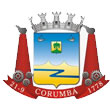Autores
- MARCILENE DOS SANTOSFCTE - UNESP, CAMPUS DE OURINHOSEmail: marcilene.santos@unesp.br
- SALOMÃO CALEGARIUFESEmail: salomao.calegari@ufes.br
- KARINA PATRÍCIA PRAZERES MARQUESUSPEmail: karina.marques@alumni.usp.br
- ALESSANDRO BATEZELLIUNICAMPEmail: : batezeli@unicamp.br
- EDUARDO SALAMUNIUFPREmail: salamuni@ufpr.br
- DANIEL PEIFERUniversity of TuebingenEmail: peiferdaniel@gmail.com
- NELSON FERNANDESUFRJEmail: nelsonff@acd.ufrj.br
Resumo
Landsliding interacts with bedrock channel incision, which plays a crucial role
in soil erosion, nutrient fluxes, and global climate. Increased channel incision
can steepen hillslopes and facilitate landslides. Large landslides in particular
contribute substantial sediment volumes to valley bottoms, creating dams and
temporary lakes along the channels and shielding the bedrock. As a result,
upstream channel incision is delayed, restraining erosion and topographic decay.
Limited research has been conducted on the relationship between landslides and
drainage reorganization in Brazil. In this study, we focus on exploring this
relationship within the central axis of the Ponta Grossa Arch, Brazil. We
quantitatively analyze the topography and empirically investigate sedimentation
and drainage patterns to identify ancient landslides, associated dams and lakes.
Our research examines the normalized channel steepness and its potential
correlation with landslides and steepening slopes. We calculate a χ (chi) map
for the Tibagi and Cinzas river networks to detect signs of divide migration and
potential links with landslides. Our findings reveal Late Pleistocene landslides
in the Tibagi and Cinzas catchments clustered in three specific areas. A notable
rearrangement occurred between the two major tributaries of these catchments,
wherein the Laranjinha River (located in the Cinzas basin) captured a
significant portion of the Congoinhas River (located in the Tibagi basin). This
change resulted in an expanded drainage area for the Laranjinha River, leading
to accelerated erosion. The landslides near the wind gap primarily consist of
boulders from resistant sandstones, supported by a fine-grained mass. The
Congoinhas River was dammed, leading to the deposition of fine-grained sediments
(~85% clay/silt) and the formation of paleosols with high carbon content. This
process contributes to a delayed response of the landscape to disturbances,
while also promoting carbon sequestration.
Palavras chaves
Quantitative Geomorpholog; Landslide; Divide Migration




















